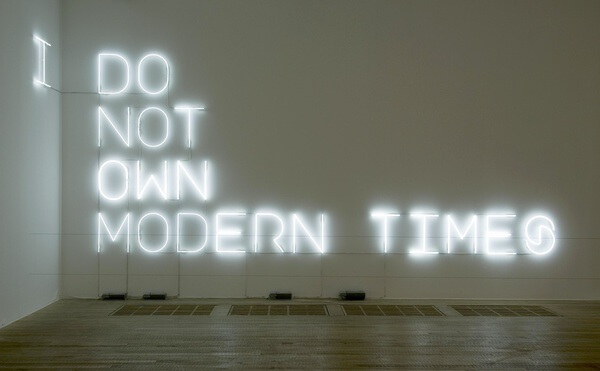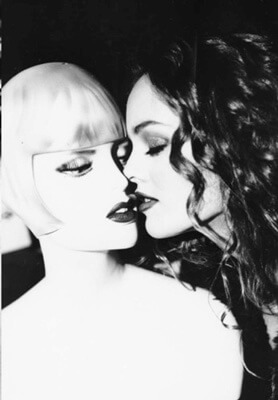Dear Friends,
With the end of the most unpredictable year in sight, I wanted to wish you and your loved ones a Happy Christmas and send every best wish for a happy and healthy start to 2021, when I truly hope we will be able to see each other again in person.
This is the first edition of a quarterly newsletter. The focus will be on the state of the art market, artists to keep an eye on and what is to come. This is my analysis and unbiased advice. I err on the side of supporting and working directly with artists and galleries because the primary market is the core of the sector. Nonetheless, insight into the overall arts ecosystem is only complete if we consider the secondary market and the not-for-profit as well.
The art world has been talking for a decade about the disruption-ready state of the sector. However, in the arts, few winners take it all. Up until 2020, the two strongest auction houses, large international galleries and global art fairs had adopted an unrelenting pace of market acceleration through headline auctions coinciding with major art fairs, gallery events coinciding with institutional exhibitions by their represented artists and a relentless monthly programme of exhibitions coupled with regular previews and private dinners for collectors and art professionals. Top galleries would attend 7-9 international fairs per year without missing a beat on the rest of gallery activities. An event-driven model that smaller players tried to emulate with uneven success.
Little in the form of disruption has challenged the visual arts market’s status quo, with the exception perhaps of Instagram, a platform that has boosted the profile of many unknown artists, became a PR channel for dealers and allowed collectors to connect directly with artists, opening up their eyes to a myriad of options. Do not confuse this with transparency or openness. The art world is small. Buyers are few and dealers are guarded individuals whose work is to build trusting relationships of support for their galleries and artists. A handshake is always preferred over an online transaction. The bread and butter for art dealers is to create and protect a market for the artists they represent, take their art to fairs and organise exhibitions in order to present their work to collectors (who will support them financially) and to curators (who will support their critical and institutional profile). That is unless a pandemic forces a change.
In a highly event-driven sector, the first months of the pandemic saw commercial galleries and non-profit institutions creating online content through their websites and Instagram in order to remain connected and relevant. Many exhibitions were cut short or postponed and more devastatingly, many were cancelled. With no high-stakes events to build onto, galleries have been left somewhat stranded and at the mercy of online fairs catching up with technology to create new digital platforms to facilitate online sales.
According to the latest issue of Art Basel and UBS Global Art Market Report, fairs represented 45% on average of a gallery’s revenue in 2019 and, with no fairs taking place this year, galleries have reported that in the first six months of 2020 the value of their sales fell by 36% on average (with a median decline of 43%). Smaller galleries, with turnover of less than $500,000, reported the largest declines in sales. The gallery sector is likely to experience even harder challenges in 2021. Since travel will not resume with normality for some time and art fairs are unlikely to take place, galleries rely on hyperlocal audiences.
The first half of the year caught off guard the online fair versions of Frieze New York and Art Basel in May and June respectively. They offered online presentations which lacked visual appeal and user-friendliness. However, both caught up and passed with a good mark with their offering at Frieze London in October and Art Basel Miami in November. The instant byproduct of COVID-19 has been art prices transparency. Whilst prices before 2020 were undisclosed unless asked, now they are publicised online for all to see.
The auction calendar has also been affected. Whilst before specialised headline auctions would coincide with key art fairs taking place in London and New York in Spring and Autumn, at present, anything goes at any point. Auction houses have been quick to reinvent themselves with televised online affairs in lieu of in-person bidding. However, whilst demand seems to keep up with the times, a major consequence for auction houses has been the lack of strong supply. The trend of consignors who prefer private sales to the scrutiny of a public auction had started a few years ago and has come to stay. Consignors prioritise discretion on ownership and final agreed price over bombastic headlines and a potentially unfulfilled estimate in uncertain times.
Non-profit institutions are sadly going to experience suffering. Cultural organisations have resorted to sell some precious crown jewels in order to make up for the shortfall that has come after closing their doors to the public for months. They have lost ticketing, hospitality and commercial revenue. Moreover, private and corporate fundraising is expected to diminish. The Victoria & Albert museum in London has announced that it will remain closed on Mondays and Tuesdays for the whole of 2021 into early 2022 in order to save on operational costs. The Royal Opera House sold last October a portrait of its former Chief Executive, a commission by David Hockney to mark Sir David Webster’s retirement in 1971. Fortunately for the institution, David Ross, Chairman of the Board of Trustees at the Royal Opera House, bought it for £12.8M and has confirmed will loan it back to the institution for public display. A different fate has taken over many US institutions deaccessioning programmes.
With a reduced annual budget, museums will slow down programming and possibly partner more frequently with international venues to produce touring exhibitions in order to share costs. The main consequence is a decrease in air time: fewer exhibitions and fewer artists on show. Therefore, the institutional and scholarly stamp of approval through acquisition and programming will also slow down. For collectors who wish to sell work or seek financial value appreciation this is important. It will take longer for emerging and mid-career artists to gain recognition. The appetite for art is there but is morphing from highly event-driven to focused and streamlined transactions. A hectic lifestyle has given way to an understated model, at the very least for the time being.
Emerging artists representing ideals based on identity politics have become the hottest ticket. The time has come for black, female and LGBTQ+ artists to have a light shining on them, which is fantastic and overdue. Some of these artists will see significant value appreciation in time because social values are shifting towards social justice, equity and diversity. Prices reached at auction and representation in museums and galleries has been and remains disproportionately biased and in favour of white male artists. Museums have been reviewing for some time their programming and acquisitions in order to compensate for their past shortcomings. Whilst I am in favour of ignoring trends and purely considering art that is good and appeals to you, regardless of gender, national identity and sexual orientation, the reality is that the market is due a correction and collectors may want to consider this.
In this changing environment, the consequences for the market are still to shape up. However, I am certain of one thing: art has always been an asset class for intergenerational wealth and it will continue to be. What is essential is a good understanding of art and its market. The current global financial situation has led to a bifurcation of fortunes. Global central banks have adopted policies to stimulate the economy and all asset classes have been buoyed. Those fortunate to hold physical and scarce assets such as property, precious metals and Art will perhaps see the greatest gains. I believe this situation will push for investors to find alternative sources of returns, driving up the price of objects in short supply. This is a good time to collect. Fortune favours the brave. And if there was ever a good time to remind us of Warren Buffet’s words: “only buy something that you’d be perfectly happy to hold if the market shut down for 10 years”.
As always, thank you for the support and I look forward to sharing 2021 with you.
If you would like to discuss how IñigoArt can assist you in your art acquisitions or to understand the art market further, please do not hesitate to get in touch.
Marina Ribera Iñigo




